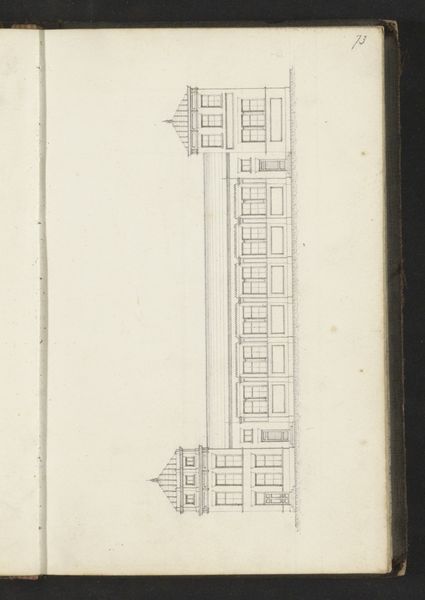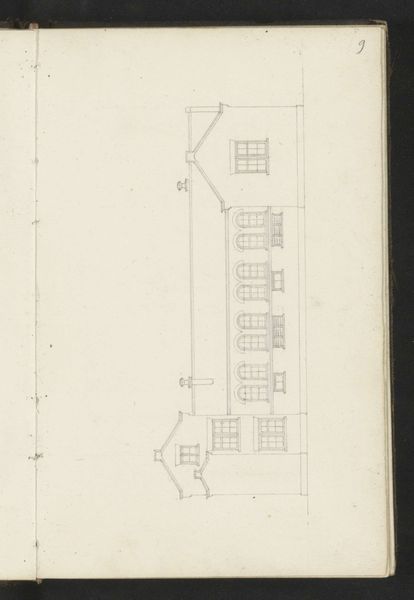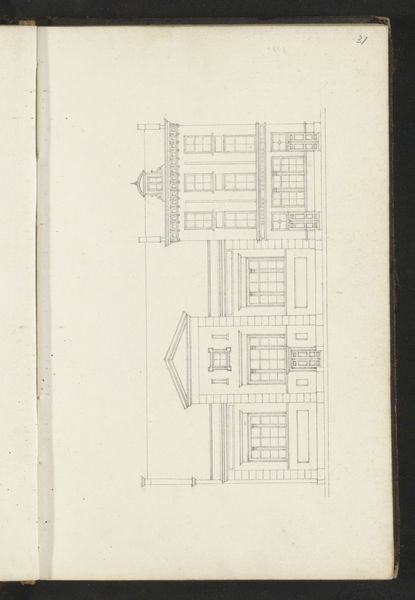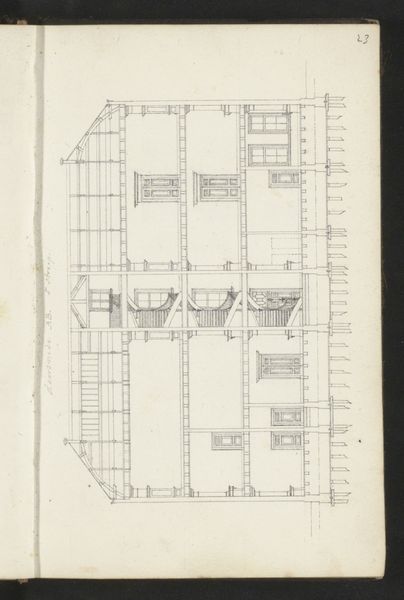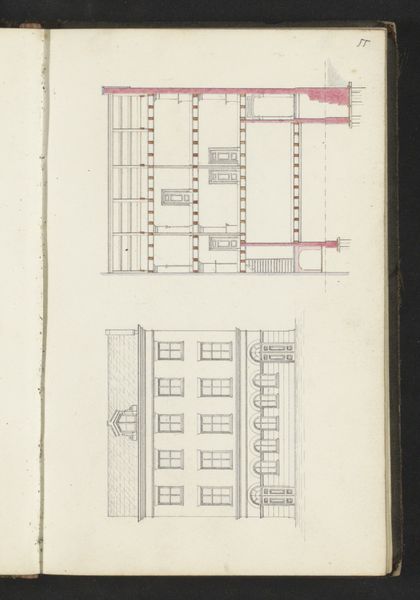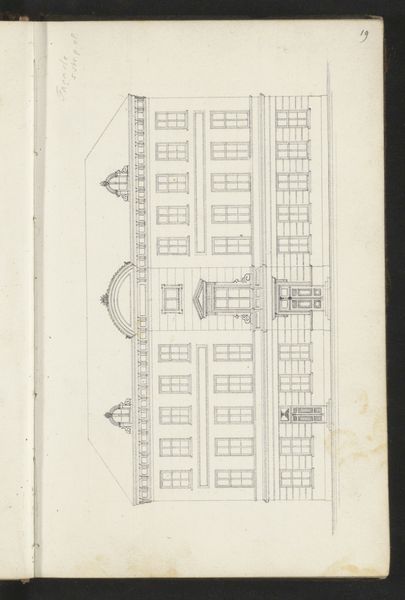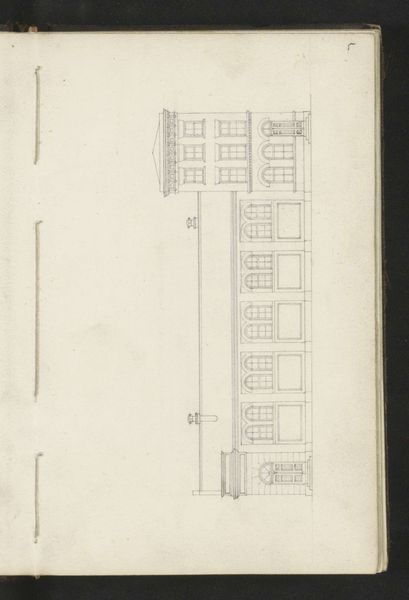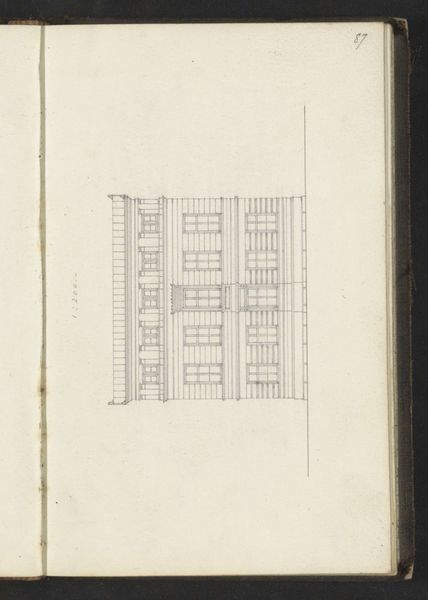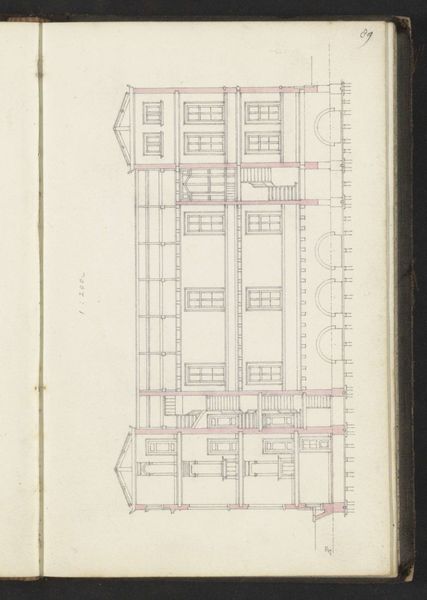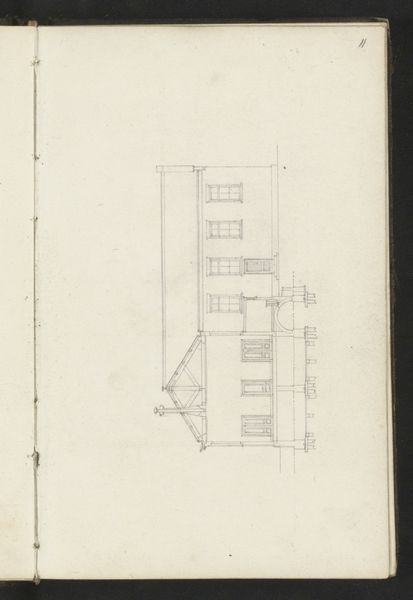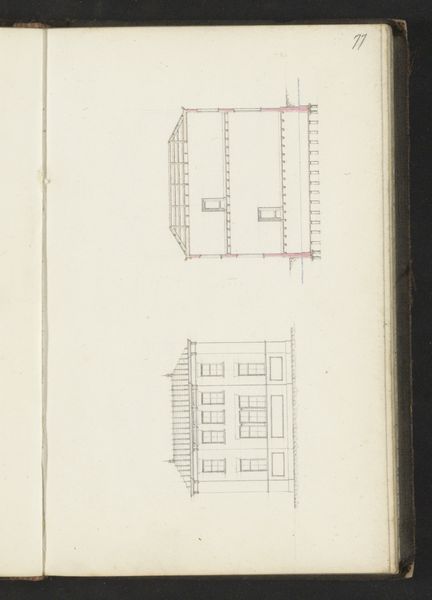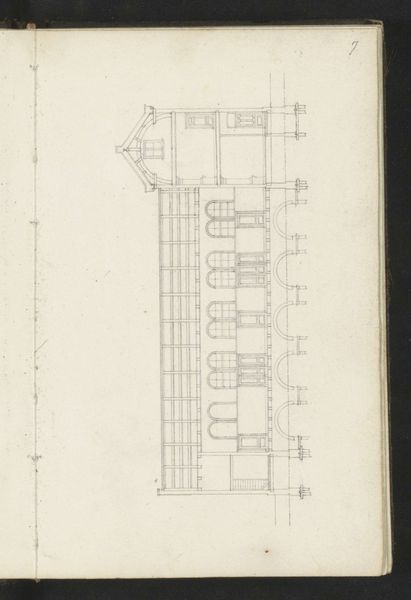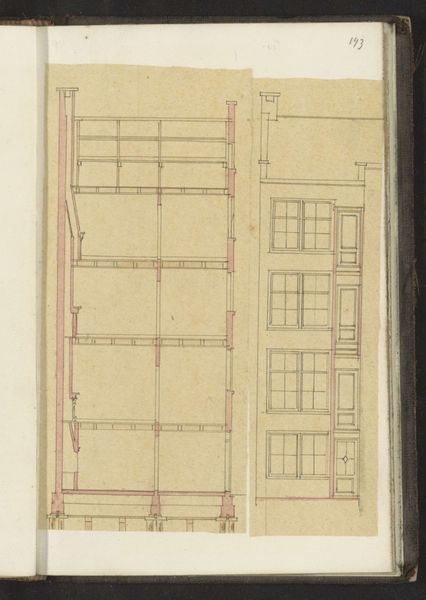
drawing, paper, ink
#
drawing
#
paper
#
form
#
ink
#
line
#
cityscape
#
realism
#
building
Copyright: Rijks Museum: Open Domain
Editor: This is "Opstand van de façade van een gebouw met rondboogvensters," a drawing by Willem Springer Jr. from around 1864, using ink on paper. It seems incredibly precise, like an architectural blueprint. What details jump out at you? Curator: Well, the linearity itself is telling. Springer's use of ink, mass-produced even then, points to a shift in how architectural drawings were being made and disseminated. It moves away from the individual master craftsman and leans into a more reproducible, arguably democratized form of architectural documentation. Look closely. Does this level of detail serve aesthetic purposes or something else? Editor: I see what you mean. It's less about artistic flourish and more about exact measurement, possibly for replication or mass production of building elements. It almost anticipates industrialization in building. Curator: Exactly! It's a record of labor, but also potentially a plan for further labor. The building’s facade becomes a module, a unit to be reproduced. What does that say about architecture's role during that period, about labor itself? Editor: It feels like it reduces the artistic intention, prioritizing functional repetition, perhaps signalling architectural practices becoming streamlined… industrial even. But maybe it opened opportunities for quicker urbanization? Curator: Precisely. And where do the craftsmen fit into this emerging picture? Consider how industrialization changed skill requirements and opportunities. Also, note the clean lines and the lack of human figures. What does that omission tell us about how labor is portrayed? Editor: It makes it invisible, somehow erasing the human element behind the structure's creation. Interesting, I had originally just seen a precise drawing. Curator: And now you see something else – the materials, the process, the implications on labour. That’s the value of considering the materiality in historical context. Editor: I'll never look at architectural drawings the same way.
Comments
No comments
Be the first to comment and join the conversation on the ultimate creative platform.
